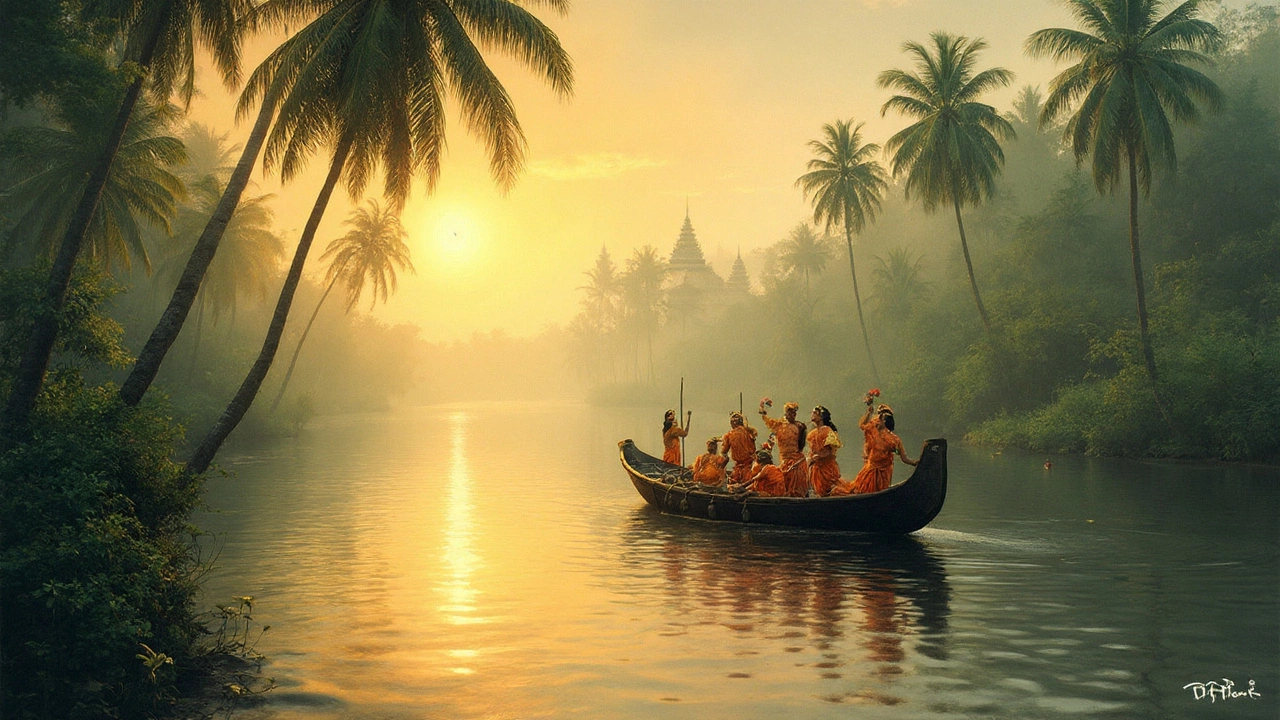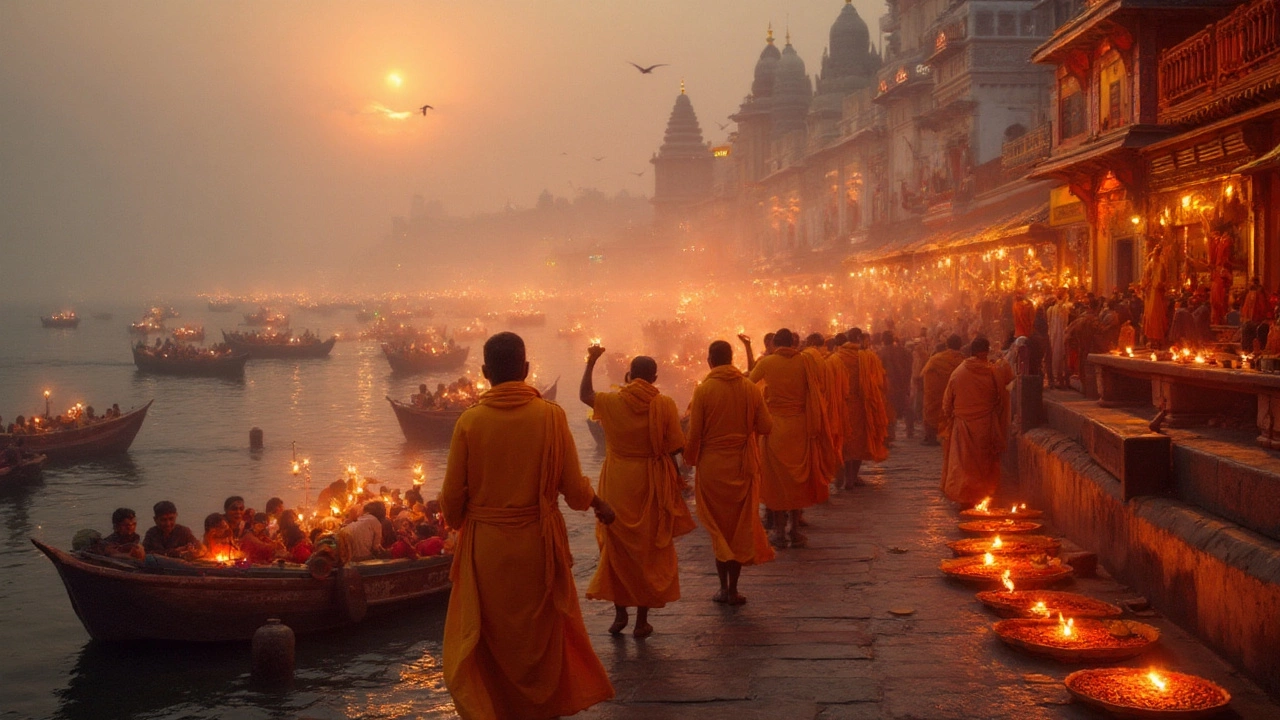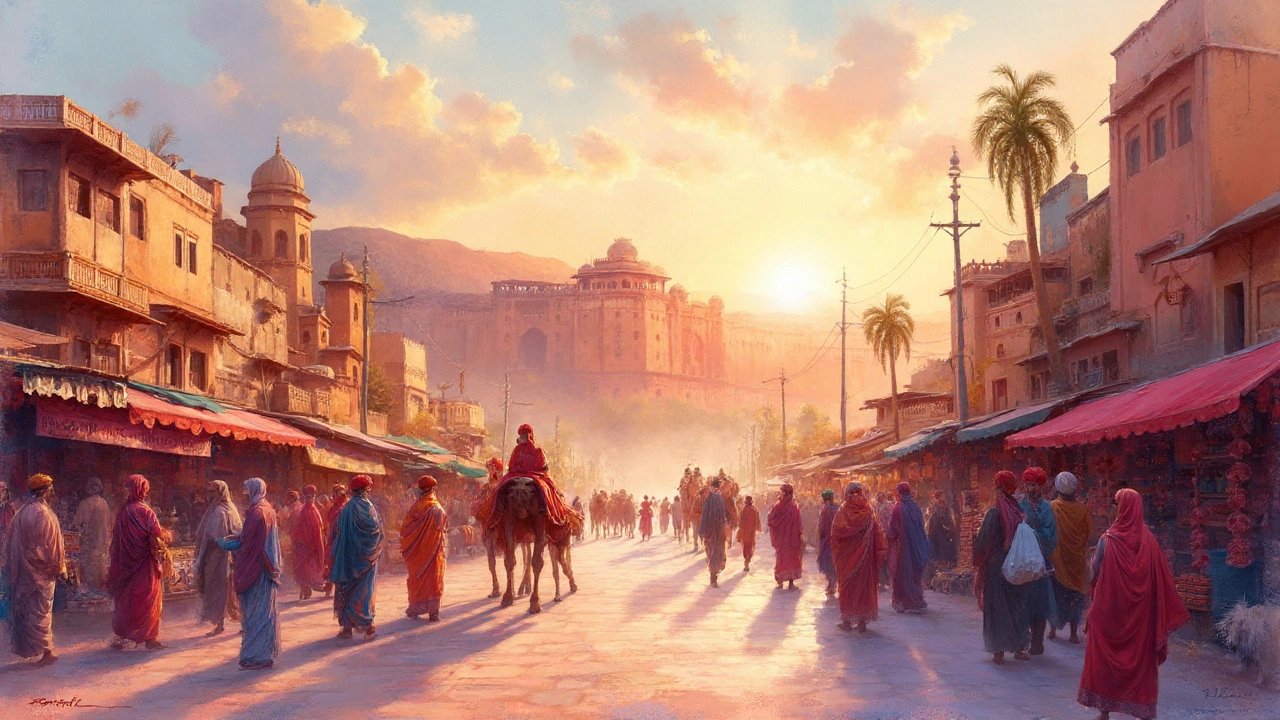Ever tried picking the "richest heritage" state in India? That’s like arguing about the best Indian dish—you’ll always get a heated debate and too many tempting answers. The real surprise: India’s heritage isn’t just scattered, it spills over in every state. Yet, if someone backed me into a corner, I’d say Rajasthan just edges out the rest. Not because others don’t deserve the spotlight, but because Rajasthan’s history, art, music, and living culture crash together in a way that bowls you over, whether you’re a local or a traveler on your first palace tour. And that’s just the start.
The Case for Rajasthan: Where Heritage Feels Alive
So, what puts Rajasthan at the top of the heap? Start with the obvious: age-old forts that don’t just stand—they tower, glowing golden on sunset horizons. You’ve got Jaipur’s Amber Fort, Mehrangarh in Jodhpur, Chittorgarh, and so many more that each feel like walking into a different epic. These aren’t only slices of history—they’re still woven into daily life. Locals huddle for tea where kings once plotted wars. Every structure bursts with stories, legends, and drama always just a question away.
It’s not just stone and mortar. Rajasthan’s festivals pull in throngs—even locals plan around them. The Pushkar Camel Fair isn’t just about camels; you get music, folk dancers swirling like a living painting, fire eaters, competitions you didn’t know existed. And during Diwali, entire cities like Udaipur turn into glimmering reflections on the lakes. It’s a different universe.
Now, let’s get down to specifics. The state has over 8 UNESCO World Heritage Sites—as of 2025—including the famous Jantar Mantar observatory and the Hill Forts of Rajasthan group. For a sense of just how packed Rajasthan is with heritage sites (major and minor), take a look:
| Heritage Feature | Numbers in Rajasthan | Comparison (National Rank) |
|---|---|---|
| UNESCO World Heritage Sites | 8 | 1st |
| Archaeological Monuments | 175+ | Top 3 |
| Major Forts & Palaces | 45+ | 1st |
| Distinct Folk Dances | 30+ | 1st |
And the culture isn’t frozen in time. Wander the lanes of Jaisalmer—locals still wear vibrant traditional gear you won’t see outside wedding parties anywhere else. Instead of museums, much of Rajasthan’s heritage happens in bazaars, roadside puppet shows, even in the flavors of kachoris and dal baati churma. It’s storytelling through taste, touch, and color.
If you want tips, here’s a pro move: skip just the cities and hit the smaller villages like Mandawa or Bishnoi. You’ll run into havelis with mind-bending frescoes, artisans making pottery the same way for centuries, and maybe even a royal hunting lodge where peacocks still strut like fashion models. Always strike up a conversation—you’ll walk away with a legend you can’t Google.

Challengers: Other States Carving Their Place in Heritage
Of course, India’s too vast for a one-state story. Tamil Nadu arguably matches Rajasthan step for step with its wild temple architecture and deep spiritual history—places like Brihadeeswara Temple or Madurai’s Meenakshi Temple aren’t just ancient, they’re massive, teeming with pilgrims, colors, and chants that rattle your soul. Tamil Nadu has the highest number of protected monuments recognized by the Archaeological Survey of India—over 400 of them! That dwarfs most other states.
Karnataka sneaks into the mix with Hampi, a city of stone ruins so otherworldly UNESCO calls it one of the best-preserved ancient metropolises. Walk through Hampi’s boulder-strewn landscapes, and you can almost hear horses galloping and markets bustling. The Mysore Palace packs more grandeur into a few acres than most European castles do in an entire country. And if you want ancient art, Ajanta and Ellora caves in Maharashtra are basically India’s underground cathedrals.
But let’s not forget Uttar Pradesh. This state is home to the Taj Mahal, Agra Fort, Fatehpur Sikri, and the city of Varanasi—probably the world’s oldest living city. That’s a heavy lineup. Every year, millions come to witness the Ganga Aarti, sip chai by the ghats, and witness a collision of the sacred and the everyday in a way that always manages to overwhelm, no matter how prepared you think you are.
Punjab and West Bengal don’t lag behind, either. Punjab’s heritage isn’t just about architecture but about a fierce, living spirit—think about Amritsar’s Golden Temple and those massive rural fairs with Bhangra that can make any non-dancer jump in. West Bengal brings in Rabindranath Tagore, Shantiniketan, Durga Puja, and some of the oldest colonial architecture. Ancient scripts from Nalanda University now safeguarded in museums remind everyone knowledge was as prized as gold here.
So, what does this mean for the traveler or heritage buff? You need to know what kind of heritage speaks to you: palaces, musky with memories, or temples echoing with chants; rituals carried out for a thousand years, or cities where every brick holds a poem. The idea isn’t to crown one and ignore the rest. India’s a buffet, so go hungry and sample as much as you can.

Secrets, Survival, and Ways to Truly Experience India’s Heritage
India’s heritage isn’t just about sightseeing. Want the real treasure? It’s in experiences—the kind that make your hairs stand up. Rajasthan, for instance, isn’t just about seeing a fort from afar. You can stay overnight in restored palaces-turned-hotels. Get up early and ride a camel before breakfast, watching the desert mellow from purple to gold. Feeling adventurous? Try the local folk music nights in a tiny village where you’ll probably be handed a drum and told to join in.
Look beyond the headline sites. In Tamil Nadu, sneak behind the usual temple routes and find smaller shrines where priests still sing songs that haven’t changed since the Cholas. Take a detour in Kerala, and you might watch craftsmen build a snake boat the old way, shaping planks with hand tools. There’s living heritage everywhere—performance arts, handloom weaving, and even recipes that tell generational tales. If you see a family recipe scrawled in a grandmother’s handwriting, don’t pass by; that’s as real as any ancient script.
Wild statistics back up just how much heritage is packed into this country. India has a staggering 40 UNESCO World Heritage Sites as of August 2025, topping the charts in Asia, with more on the tentative list hoping to join the club soon. Rajasthan boasts the largest share when it comes to forts, palaces, and living folk arts. Tamil Nadu leads in temples and heritage dance forms. Uttar Pradesh still wins as the top spot for historic cities and grand Mughal heritage.
Here are some quick tips for soaking up the experience:
- Choose a home-stay or heritage hotel run by locals—they’re some of the best history storytellers out there.
- For festivals, aim for offbeat ones like Rajasthan’s Gangaur or Bengal’s Durga Puja—but ask locals how to participate respectfully.
- Bring a sturdy notebook—odds are you’ll walk away with more untold stories than you can remember.
- Try specialty food wherever you go—every region has a dish with a backstory.
- If you love art, keep cash handy at local markets—handicrafts aren’t just souvenirs, they’re living tradition.
So, which state really has the richest heritage in India? Sure, Rajasthan often steals the show. But the truth is, every state’s got something no one else can match. The real secret is to slow down, ditch the checklist, and let each state’s stories reel you in. Don’t be surprised if you come away thinking *your own favorite* state is the richest of them all. And maybe that’s the whole point.
